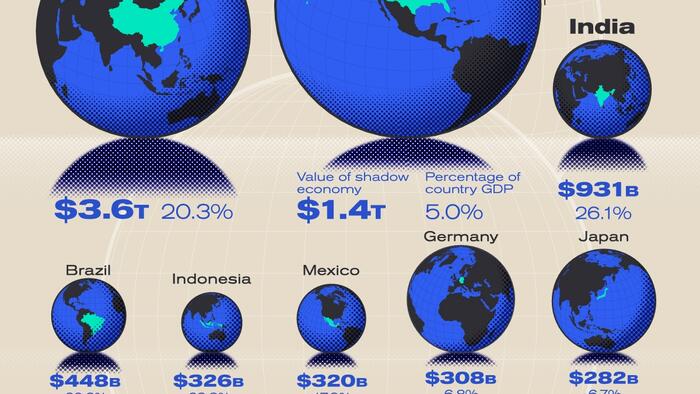
What’s a Shadow Economy?
- Think of it like an iceberg: What you see (official economy) is much smaller than what’s hidden.
- Includes: Cash jobs (e.g., babysitting, repairs), unregistered businesses, and illegal activities.
- Why it’s a problem: Less tax money for governments, fewer protections for workers, and unfair competition for legal businesses.
Key Players: The Biggest Shadow Economies
Using data from the EY Global Shadow Economy Report 2025, here’s where the hidden economy thrives:
- China 🇨🇳
- Size: Largest in the world (about 200 million workers).
- Key Sectors: Drivers, nannies, construction.
- Impact: Taxes from income are just 6% of GDP (vs. 24% in wealthy countries).
- United States 🇺🇸
- Size: $1.4 trillion (2nd largest).
- Hotspots: States with lower incomes and strict rules see more underground activity.
- India 🇮🇳
- Growth: Informal jobs are rising fast, driven by small businesses and cash payments.
Regional Leaders:
- Latin America: Brazil ($448 billion).
- Europe: Germany ($308 billion, 6.8% of its GDP).
How Do We Measure the Invisible?
- The “Cash Test”: Experts track cash use (especially large bills), since shadow economies rely on untraceable money.
- 70+ Factors: Employment trends, regulation costs, and tax policies help estimate the hidden economy.
Why Should You Care?
- Lower Tax Revenue: Less money for schools, roads, and healthcare.
- Worker Risks: No safety nets, minimum wages, or legal protections.
- Economic Gaps: Informal workers often lack access to loans or retirement plans.
Zooming Out
Shadow economies are complex, but their effects are real—shaping jobs, taxes, and quality of life worldwide. While they provide income for millions, the lack of oversight creates long-term challenges.